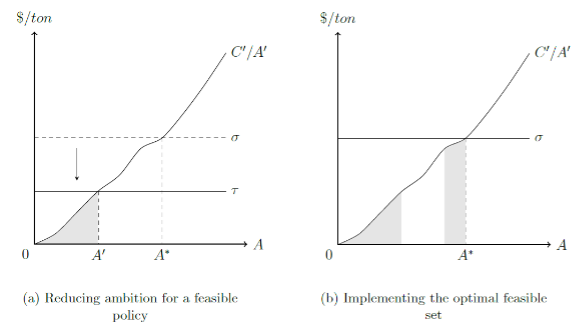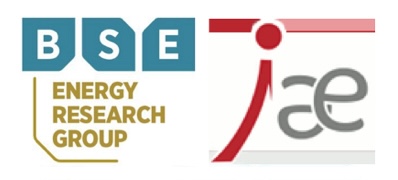The urgent need to decarbonize our economies requires the implementation of policies that embrace a broader notion of efficiency—being feasible, fair, effective, and stable over the long term.
As the urgency for global greenhouse gas reductions grows, policymakers work on proposals for net-zero emissions. While cost efficiency is often highlighted, this study advocates for a broader definition of economic efficiency. As illustrated by case studies from the European experience, balancing the associated trade-offs is crucial for a successful policy portfolio.
The discussion focuses on essential attributes of climate policies. A comprehensive international survey revealed that policies incorporating cost efficiency, feasibility, fairness, effectiveness, and credibility gain increased social support — crucial for successful proposal and implementation. However, these factors entail trade-offs among themselves. This paper emphasizes the need to navigate them, using the European context as a case study to illustrate these efficiency dimensions and emphasize the need for a balanced approach. In this context, where carbon prices have reached a record high of 100 EUR/Ton, emission-reducing policies have expanded carbon pricing to all sectors and taxed the carbon content of imports. Despite social protection measures accompanying climate policy, social and political opposition has caused delays in some climate policy initiatives. The paper highlights these intricacies, emphasizing that infeasible or unfair solutions may not effectively address the overall problem.
In the context of a social planner selecting the optimal climate policy toolbox, the authors conduct a systematic analysis. Initially, they narrow their focus considering only cost efficiency. Subsequently, they demonstrate how adopting a broader notion of efficiency, including the elements mentioned above, alters both the objective function and the feasible set of policies.
Under certain assumptions, static cost-benefit analysis involves maximizing benefits (A) from abatement while considering associated costs (C). Policies are accepted until the marginal cost of abatement equals the social value of the marginal abatement, measured by the social cost of carbon (σ). This forms the basis of the Marginal Abatement Cost (MAC) framework, quantifying monetary costs of reducing one ton of CO2. Expressing costs in dollars per ton of CO2 is valuable for identifying urgent policies, those requiring careful trade-off considerations, and insufficient policies even if feasible.
However, when assessing GHG emissions, the long-term nature and complexities of dynamic decisions in costs and benefits mean that evaluating policies under the static model would overlook crucial factors and the probabilities of binding events (e.g. relying on current technology or promoting technological improvements). The difficulty of measuring these dynamic effects introduces a challenge when selecting cost-efficient policies. The authors exemplify some of these possible factors such as learning effects when developing low-carbon technologies, peer effects and social interactions, EVs and charging stations’ “chicken-and-egg” problem, uncertain demand for green hydrogen, and debates around Green Taxonomy classifications.
Beyond cost efficiency, the success of policies hinges on securing adequate societal support for adoption. Therefore, it is crucial to consider feasibility when comparing potential policies. Feasibility may necessitate the implementation of accompanying policies. For example, while carbon pricing alone may lack social support despite its benefits, coupled with a tax revenue rebate through transfers could enhance its social acceptability.
Figure 1: Feasibility constraints affect the optimal toolbox

As the Figure 1 shows in panel (a), feasibility constraints may reduce policy ambition. In the carbon pricing example, it may imply reducing the carbon tax (τ) below the social cost of carbon (σ), resulting in abatement below the optimal level (A*). However, when bundled with complementary policies, the optimal level could be reached. In panel (b), the optimal policy involves maintaining ambition but choosing costlier yet feasible policies over cheaper but unfeasible ones. This difference in allocation reveals that, although the optimum is not achieved, more abatement is realized compared to merely reducing ambition.
Overall, this analysis suggests that postponing investment in cost-effective projects solely because more efficient projects have not been implemented yet is suboptimal. Less efficient projects do not necessarily crowd out more efficient ones. The authors illustrate this through current policy examples, including carbon policies and compensation schemes, social acceptance of small-scale renewable investments, and carbon taxes versus efficiency standards.
The paper also outlines how the model should incorporate considerations for fairness, effectiveness, and long-term factors. This can be achieved via augmenting the main model by including constraints, assigning weights to social groups, incorporating discount factors, or updating the value of the social cost of carbon. Specifically, fairness emphasizes the significant role of distributional concerns in shaping feasible policies such as carbon pricing, triggering social protests like the Yellow Vests movement in France.
The effectiveness of a policy depends on the certainty of estimated reductions, exemplified by phenomena like carbon leakage, the degree of additionality and the possible lack of it in markets for carbon offsets, and behavioral aspects. Given the long-term nature of climate change, accounting for credibility and uncertainty is vital. Examples include the need for a robust market design, the credibility of renewable policies (e.g. with upfront subsidies), long-term innovation policies, or setting an increasing social cost of carbon that would pass policies as cost-effective. The authors conclude that the challenge lies not in the absence of efficient tools but rather in the ambition and ability to implement them, as the public’s acceptance plays a pivotal role in their success.


